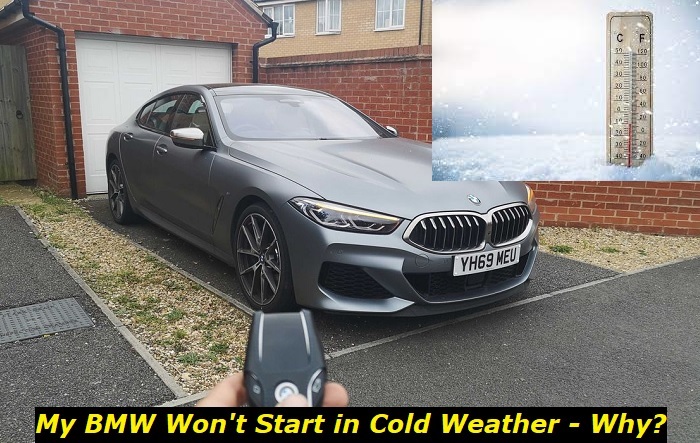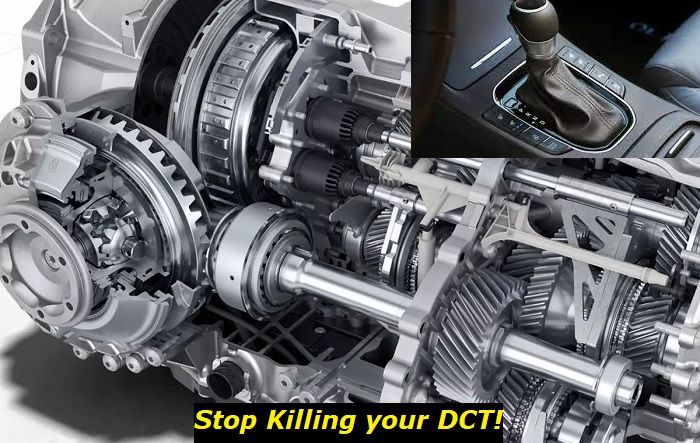Getting any car started in cold weather can be a battle. Cars are finicky machines that like things hot, so they can get unpredictable in cold weather. BMWs are no strangers to this issue. In fact, many BMW owners claim that getting their car started on a cold morning is always a tough time. Why is it that BMWs are so hard to start when it's cold?
Engine start battery problems highlights
- Level of urgency:Medium
- Can you drive?Yes
- DIY inspection:Possible
- DIY repair:Possible
- Price for repair:$150 - $250
- Common Reasons:Battery is dying
- Ways to fix:Charge the battery with a tender, replace the battery

Why Won't My BMW Start in Cold Weather?
Why won't your BMW start in the cold? If you live somewhere where the temperature regularly dips below freezing, you'll be familiar with how hard it is to start a car when it gets really cold. This issue affects all cars, not just BMWs. The reason is that cold temperatures don't agree with an engine's components.
Car parts are designed to work at any temperatures they might encounter during normal operation, which includes cold temperatures. However, they're designed to work at their best at high temperatures, because the engine gets really hot once it starts going. This means that many engine components are barely functional at freezing temperatures, while some even start to fail.
1) Battery Problems
The first place to look when you're having trouble starting in the cold is your battery. Battery performance drops sharply when the temperature is low. Cold batteries produce lower voltage, and in extremely low temperatures, they might produce no voltage at all. Naturally, this isn't ideal, and your car won't start.
If your car isn't cranking or cranks weakly, then you should check out your battery. This is a sign that pretty much everything else in your engine is working right, but the battery is struggling to power the starter motor.
2) A Bad Starter
The starter motor does exactly what its name says- it starts your engine. When you turn the ignition, the starter motor kicks on and turns the car's flywheel, cranking the engine. If the engine cranks successfully, then your engine will start. A bad starter often has a hard time doing this.
This is because a starter will often draw more current as it starts to go bad. When the weather is warm, you might not notice it because your battery will provide enough energy to power the failing starter. But when it starts to get cold, starter issues can rear their head. The battery's performance will fall with the temperature, and it might get to a point where the faulty starter will require more power than the battery can deliver.
It's often difficult to tell the difference between a bad starter and a dead battery. If the light in the cabin and the dashboard are bright, but dim when you try to start the car, then you probably have a bad starter. If the starter is bad, you probably won't hear the engine crank at all.
3) Fuel Problems
Fuel is a liquid, and much like any other liquid, fuel freezes when it gets cold enough. This poses a real problem in engines because engines don't take solid fuel. Frozen fuel can cause blockages in the fuel system. Ice crystals in the fuel can block the narrow nozzle of fuel injectors, or clog the fuel line or fuel pump. All in all, this results in little to no fuel reaching the engine.
4) Cold Fluids
Your car's engine oil needs to be hot to move through the engine and lubricate its moving parts. Engine oil thickens in cold weather, causing problems with lubrication. This results in hard starting and wear on the engine.
How Can I Get My BMW to Start in Cold Weather?
Apart from moving somewhere warmer, there are lots of ways to beat the cold and get your car started. With just a few precautions, you won't need to deal with the trouble of turning your ignition and waiting until the car warms up.
1) Jump Start Your Car
If the cause of your cold weather worries is a dead battery, you'll probably need a jump from a warm car. Jump-starting your car will bypass your cold battery and get your engine running. That will give your battery a chance to warm up and charge as well.
2) Install a Spare Battery
If your battery is dead, you should install any spare batteries you might have. This is particularly helpful if your spare battery was stored somewhere warm, like in the garage. The warm battery should have better performance than the cold one, meaning it should start the engine more easily.
3) Replace the Starter
Replacing your starter isn't easy, but it's worth it because it will save you a lot of trouble in the long run. Getting a new starter will make your car start more reliably in all weather conditions, not just in the cold.
Replacing a starter motor is a long-term fix and not a very quick task. In some cars, you might be able to replace it yourself, but others might require a mechanic. If you're in a pinch and need to start up quickly, you can attempt to jump-start your car with a warm battery in a running car. The warm battery might be able to provide enough charge to power the faulty starter. Keep in mind that jump-starting your car can ruin a faulty starter, so your should already be making plans to have it replaced.
4) Add Fuel to the Tank
Adding more fuel to your tank is a simple way of dealing with a frozen fuel line. This could raise the temperature enough to melt any ice that might have formed in the fuel line.
You don't need to fill the tank up completely. Three gallons is usually enough to warm up the tank.
5) Cycle the Key
Cycling the key is a useful trick that can warm up your battery in cold weather. To cycle the key, turn the ignition until the car enters "accessory" mode, but don't start the engine. This will power the car's electronics, warming up the battery and the starter. Turn the key back to the off position. This is one key cycle.
Cycle the key about ten times, and then start the car. Ten key cycles should provide enough time and energy to warm up the battery and starter. If the engine doesn't start, you'll have to consider jump-starting.
What Can I Do to Make My BMW Easier to Start in the Cold?
Dealing with an unresponsive engine on a cold morning is nobody's idea of a fun time. This is especially true if you need to get to work on time. To prevent these cold morning delays, you'll need to take measures to protect your car from the effects of frigid weather.
- Keep the Gas Tank Full
This is generally good advice to keep your car ready to go, but a full gas tank will also help your car start faster in the cold. If you keep your tank more than half full, it prevents the fuel vapor from forming excessive condensation on the walls of the fuel line. Less condensation in the fuel lines means a lower chance of freezing and fuel blockages.
- Park Your Car in a Warm Place
You won't have to deal with cold weather issues if you simply avoid the cold weather. Park your car inside if you have access to a garage. Even parking beside a wall will keep your car from getting too cold by protecting it from the wind.
- Use the Right Engine Oil
Since engine oil thickens in cold weather, your engine will have trouble moving the oil to where it needs to be and starting the engine. You can get around this by using engine oil designed for winter. Oil with a "W" in the index won't thicken much in cold weather, but make sure to check the owner's manual to see BMWs recommendations for your car.
Bottom Line
It's common knowledge that cars are difficult to start when it's cold. The issue comes from the effect of cold weather on different parts of the car. The main culprit is usually the battery or the starter.
If you're in a hurry to get your car started, you can try to jump-start your car. You can also try to push your car to a warm area, like a garage, for the components and fluids to warm up a little.
With a bit of forethought and some maintenance, you can keep your car ready to move, even in cold weather.
About the authors
The CarAraC research team is composed of seasoned auto mechanics and automotive industry professionals, including individuals with advanced degrees and certifications in their field. Our team members boast prestigious credentials, reflecting their extensive knowledge and skills. These qualifications include: IMI: Institute of the Motor Industry, ASE-Certified Master Automobile Technicians; Coventry University, Graduate of MA in Automotive Journalism; Politecnico di Torino, Italy, MS Automotive Engineering; Ss. Cyril and Methodius University in Skopje, Mechanical University in Skopje; TOC Automotive College; DHA Suffa University, Department of Mechanical Engineering






Add comment